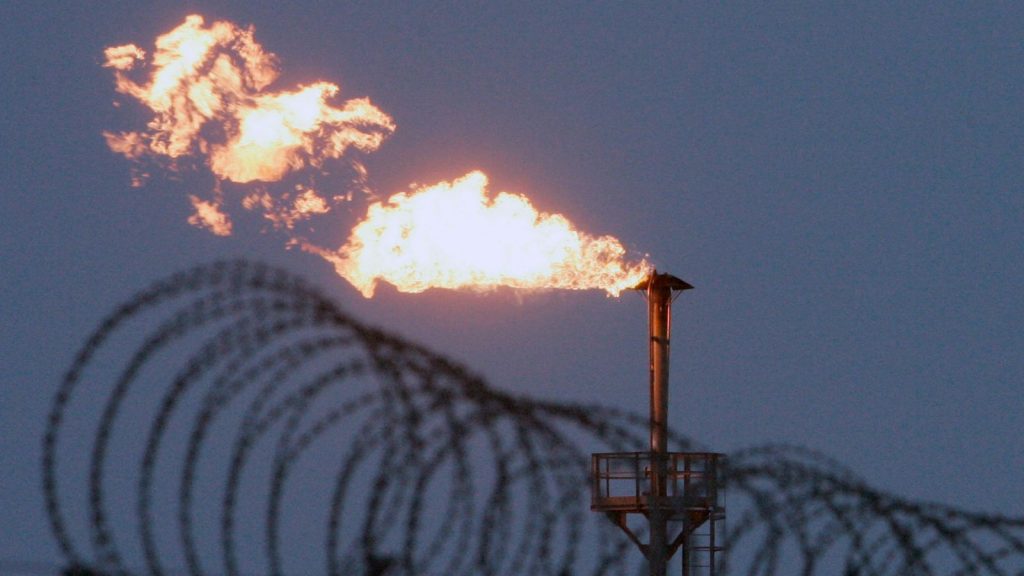Russia ‘burning off millions in gas a day’ as Europe grapples with energy crisis
Russia is burning off large amounts of natural gas that it previously would have exported to Germany through the Nord Stream 1 pipeline, analysis suggests.Experts at Norway-based Rystad Energy say satellite monitoring of radiant heat levels at a new liquified natural gas (LNG) facility being built near the Finnish border indicates the practice has been ongoing since 11 July – and an estimated $10m (£8.4m) worth of gas is being burned every day.
The flaring first came to light a few weeks ago when Finnish people noticed a large flame on the horizon at the Russian border.Analysis by the independent energy research company suggests around 4.34 million cubic metres of gas is being burned every day.While the flaring may be part of testing procedures at the Portovaya LNG plant or a lack of coordination between different operating segments, experts said “the likely magnitude and duration of this continuous flaring period is quite extreme”.
The Portovaya plant, which is northwest of St Petersburg and is planned to start up later this year, is close to a compressor station at the start of the Nord Stream 1 undersea gas pipeline from Russia to Germany.Supply was cut off for 10 days in July while the major pipeline was undergoing annual maintenance, and while it has since resumed, the gas flow is running at a fifth of its capacity.
More on Russia
Related Topics:
Gazprom, Russia’s state-controlled energy company, has cited faulty or delayed equipment as the main reason behind this.Germany disputes this, saying it is a pretext and that Moscow is using gas as a weapon to push back against Western pressure over its invasion of Ukraine – fuelling soaring prices and the deepening cost of living crisis ahead of winter.
Advertisement
Read more:UK imported no fuels from Russia in JunePutin to increase size of Russian armed forcesRussia denies this, and says Western sanctions are the reason for high gas prices.Scientists are also concerned about the quantities of carbon dioxide and soot the Portovaya LNG plant is creating.”Of particular concern with flaring at Arctic latitudes is the transport of emitted black carbon northward where it deposits on snow and ice and significantly accelerates melting,” Professor Matthew Johnson, from Carleton University in Canada, told the BBC.”Some highly cited estimates already put flaring as the dominant source of black carbon deposition in the Arctic and any increases in flaring in this region are especially unwelcome.”

Russia is burning off large amounts of natural gas that it previously would have exported to Germany through the Nord Stream 1 pipeline, analysis suggests.
Experts at Norway-based Rystad Energy say satellite monitoring of radiant heat levels at a new liquified natural gas (LNG) facility being built near the Finnish border indicates the practice has been ongoing since 11 July – and an estimated $10m (£8.4m) worth of gas is being burned every day.
The flaring first came to light a few weeks ago when Finnish people noticed a large flame on the horizon at the Russian border.
Analysis by the independent energy research company suggests around 4.34 million cubic metres of gas is being burned every day.
While the flaring may be part of testing procedures at the Portovaya LNG plant or a lack of coordination between different operating segments, experts said “the likely magnitude and duration of this continuous flaring period is quite extreme”.
The Portovaya plant, which is northwest of St Petersburg and is planned to start up later this year, is close to a compressor station at the start of the Nord Stream 1 undersea gas pipeline from Russia to Germany.
Supply was cut off for 10 days in July while the major pipeline was undergoing annual maintenance, and while it has since resumed, the gas flow is running at a fifth of its capacity.
Gazprom, Russia’s state-controlled energy company, has cited faulty or delayed equipment as the main reason behind this.
Germany disputes this, saying it is a pretext and that Moscow is using gas as a weapon to push back against Western pressure over its invasion of Ukraine – fuelling soaring prices and the deepening cost of living crisis ahead of winter.
Read more:
UK imported no fuels from Russia in June
Putin to increase size of Russian armed forces
Russia denies this, and says Western sanctions are the reason for high gas prices.
Scientists are also concerned about the quantities of carbon dioxide and soot the Portovaya LNG plant is creating.
“Of particular concern with flaring at Arctic latitudes is the transport of emitted black carbon northward where it deposits on snow and ice and significantly accelerates melting,” Professor Matthew Johnson, from Carleton University in Canada, told the BBC.
“Some highly cited estimates already put flaring as the dominant source of black carbon deposition in the Arctic and any increases in flaring in this region are especially unwelcome.”



